9 - Deep-water Sedimentary Systems: Controls and environments
1/13
There's no tags or description
Looks like no tags are added yet.
Name | Mastery | Learn | Test | Matching | Spaced |
|---|
No study sessions yet.
14 Terms
What are the physical processes of sediment transport in deep water?
Six classes ranging from creep of consolidated material to fall of completely unconsolidated sediment
Increasing mobility of material and grain freedom from creep to fall
Sediment gravity flows are most important for moving coarse sediment to deep water environments
Fluidal flows (turbidity currents)
Laminar flows (debris flows)
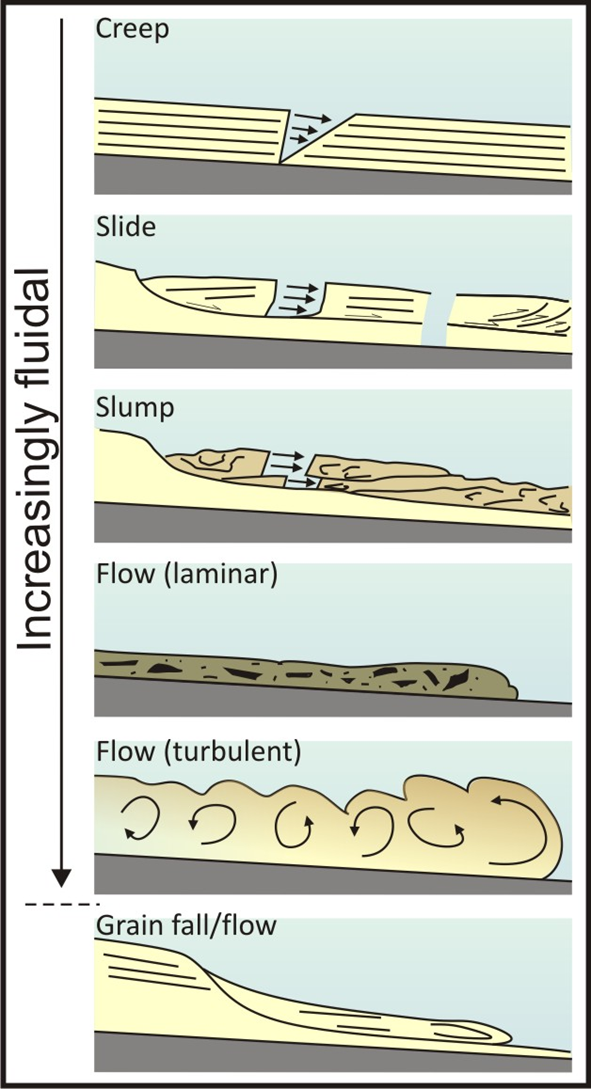
What are turbidity currents?
Definition: A turbidity current is a flow driven by the action of gravity upon the density excess of a sediment laden fluid within an ambient fluid. Sediment is maintained in suspension by the upwards (and chaotically) directed turbulent flow cells.
Flows have a dominantly Newtonian rheology
In the absence of turbulence, particles will settle from suspension
In the absence of sediment, the flow will stop (unlike a river)
Deposit character is directly linked to the rate of deposition, which, in turn is linked to the steadiness of the flow.
The deposits of turbidity currents are termed Turbidites
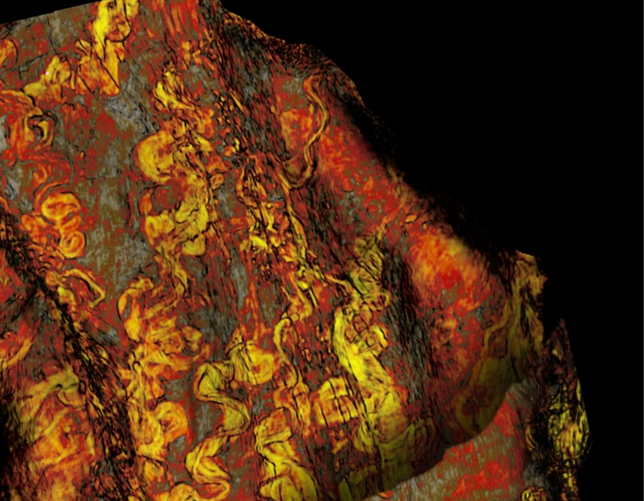
How are turbidity currents initiated?
Submarine landslides (delta collapse, canyon collapse) triggered by earthquakes or over-steepening
Homopycnal and hyperpycnal flow

What are the types of gravity flow deposits?
Turbidity current: turbidite. Turbidites don’t flow!
Debris flow: debrite
Hyperpycnal flow: hyperpycnite
Pelagic sediment: pelagite
Hemipelagic sediment: hemipelagite
Channel: channel fill etc.
Describe Low Density Turbidites
Pelagic interval:
Clayey marl (mixture of clay and calcium carbonate) Results from accumulation of floating organisms such as foraminifers.
Te, Pelitic interval:
Clayey sediments with no distinct sedimentary structures. Sand content decreases upward.
Td, Upper interval of parallel lamination:
Parallel lamination in very fine sand and silty clay generated during lower stage flow regime current conditions.
Tc, Interval of current ripple- and deformed convolute-lamination:
Small-scale current ripples (<5cm high) in fine grained sand & silt. Deformation caused by escaping water and sediment.
Tb, Lower interval of parallel lamination:
Thick parallel lamination in (occasionally graded) sand generated during upper stage flow regime current conditions.
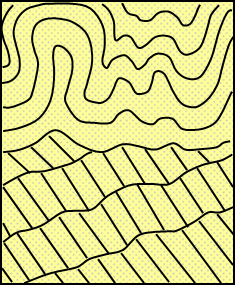
Ta, Graded/massive interval:
Upward fining in grain-size caused by gradual decline in current velocity. No apparent sedimentary structures.
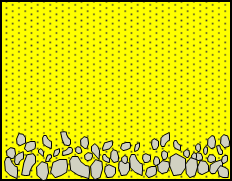
Describe High Density Turbidites
Bouma Ta, Graded/massive interval: Upward fining in grain-size caused by gradual decline in current velocity. No apparent sedimentary structures.
S1, Traction sedimentation stage: “Proximal”, pebbly sandstones. Plane beds, flat and oblique lamination and cross stratification. Locally erosive.
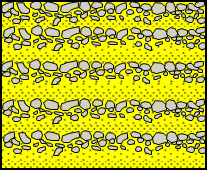
S2, Traction-carpet stage: Inversely graded coarse-grained sand and granule layers. Individual layers are 5-15 cm thick.

S3, Suspension-sedimentation stage: Massive with or without water escape structures such as dish and pillars
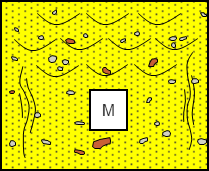
Tt, Traction structures: Medium- and fine-grained sandstones with deformed flat lamination and large-scale cross-stratification.
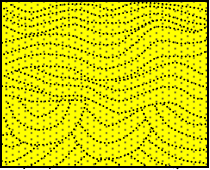
What is the distribution of high- & low-density turbidites?
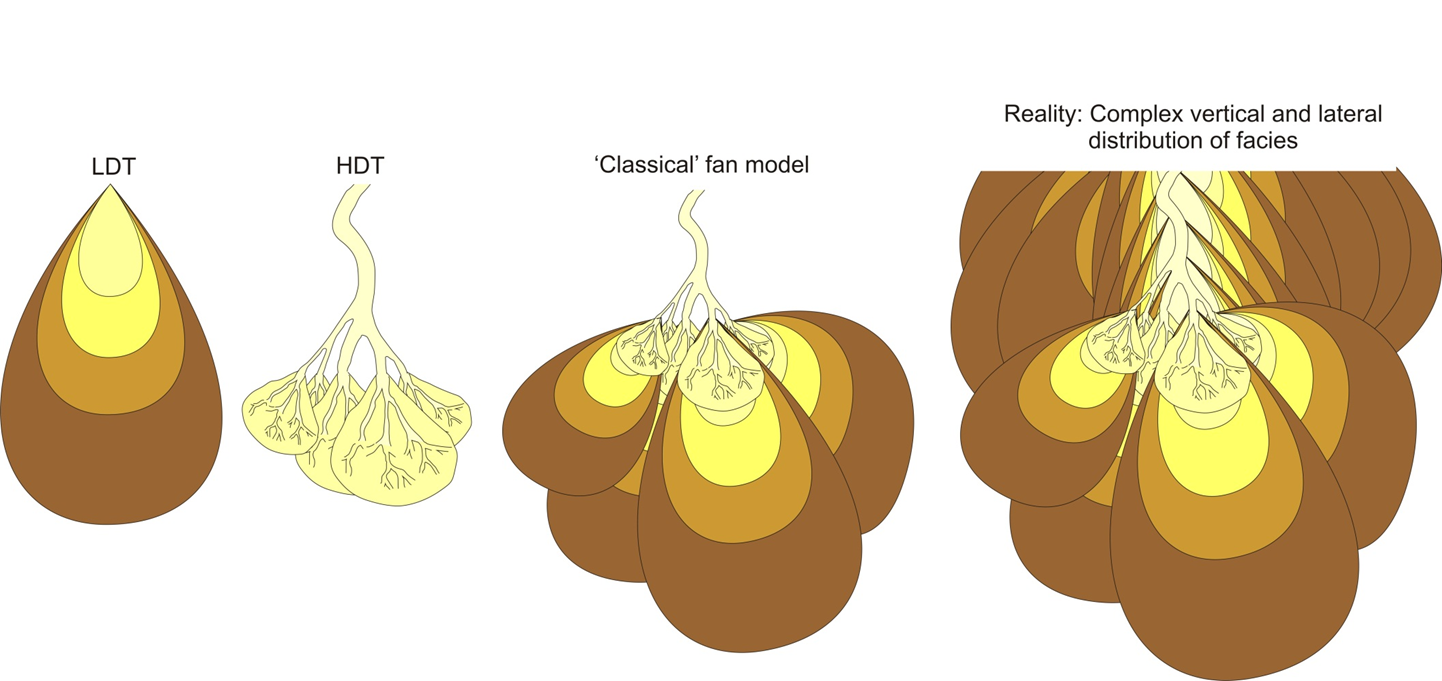
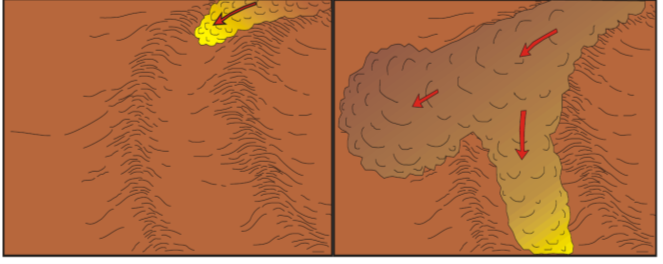
Describe thick-bedded tubidites
Within or outside channel deposition?
Evidence of channel deposition?
Bed amalgamation
Clasts
Intraformational mudflakes
Extraformational grains
Mix of facies
Thin- and thick-bedded turbidites
Bypass-parts of deposits
Debris flow deposits
Coarser grains than outside channels
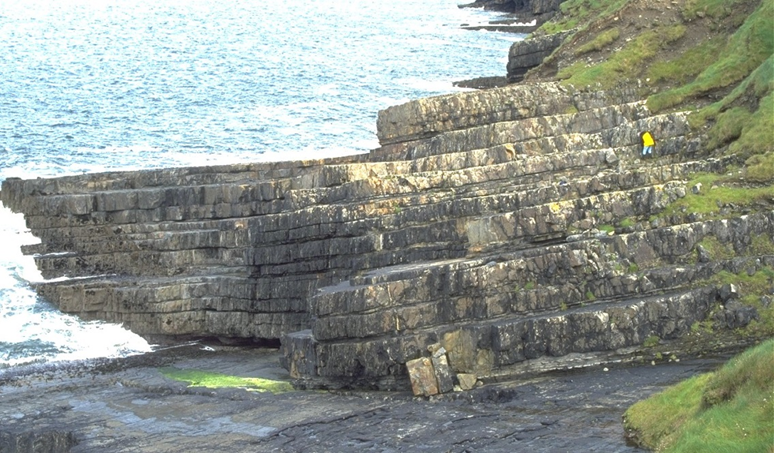
Describe thin-bedded tubidites
Levee (internal or external) or basin plain turbidites - or no genetic context at all??
External levee sands generally classical turbidites which thin upwards
Dominance of climbing ripples
Lack of erosional structures
Laterally continuous from channel to pinch out
Internal levees = multiple ripple sets, palaeocurrent complexity, poorly organized
Basin floor turbidites will be dominated single ripple form sets
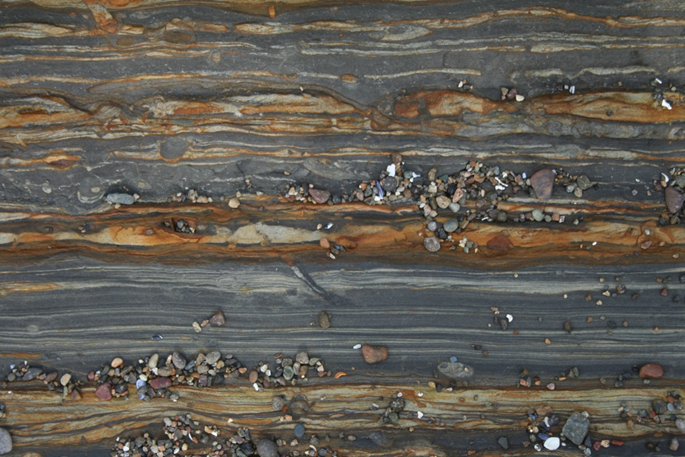
How do hybrid beds form?
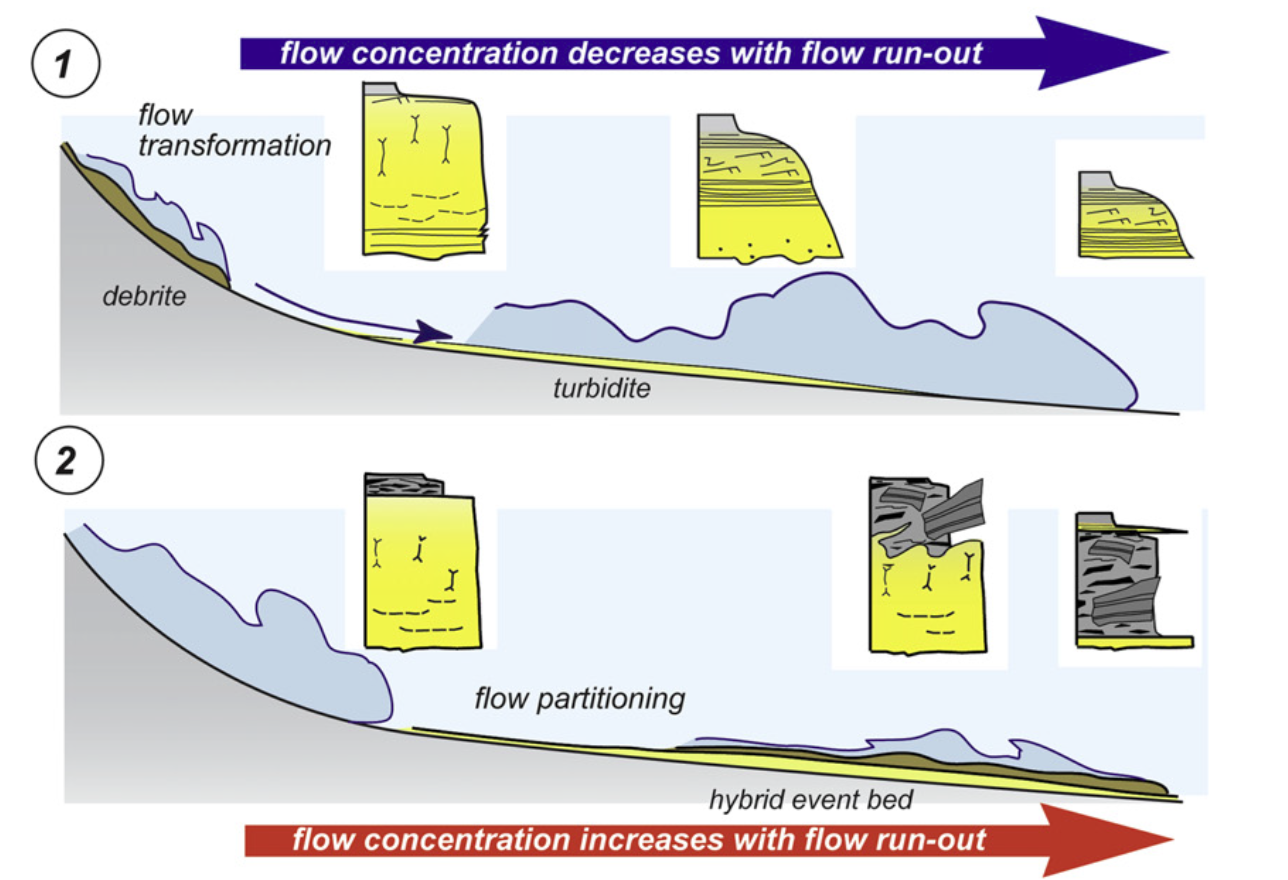

What are debris flows?
Definition: A debris flow is a high concentration (typically >40%) mixture of fluid and sediment which flows downslope due to gravity. Particles are supported in the flow by the sediment and pore pressure in the flow.
Flows have a dominantly non-Newtonian rheology
Particles are supported by the flow matrix strength and pore fluid pressure which creates a buoyancy force
Deposit character is directly linked to the flow content. Flows freeze ‘en-masse’ and the deposit represents what the flow was at that time.
The deposits of debris flows are termed Debrites
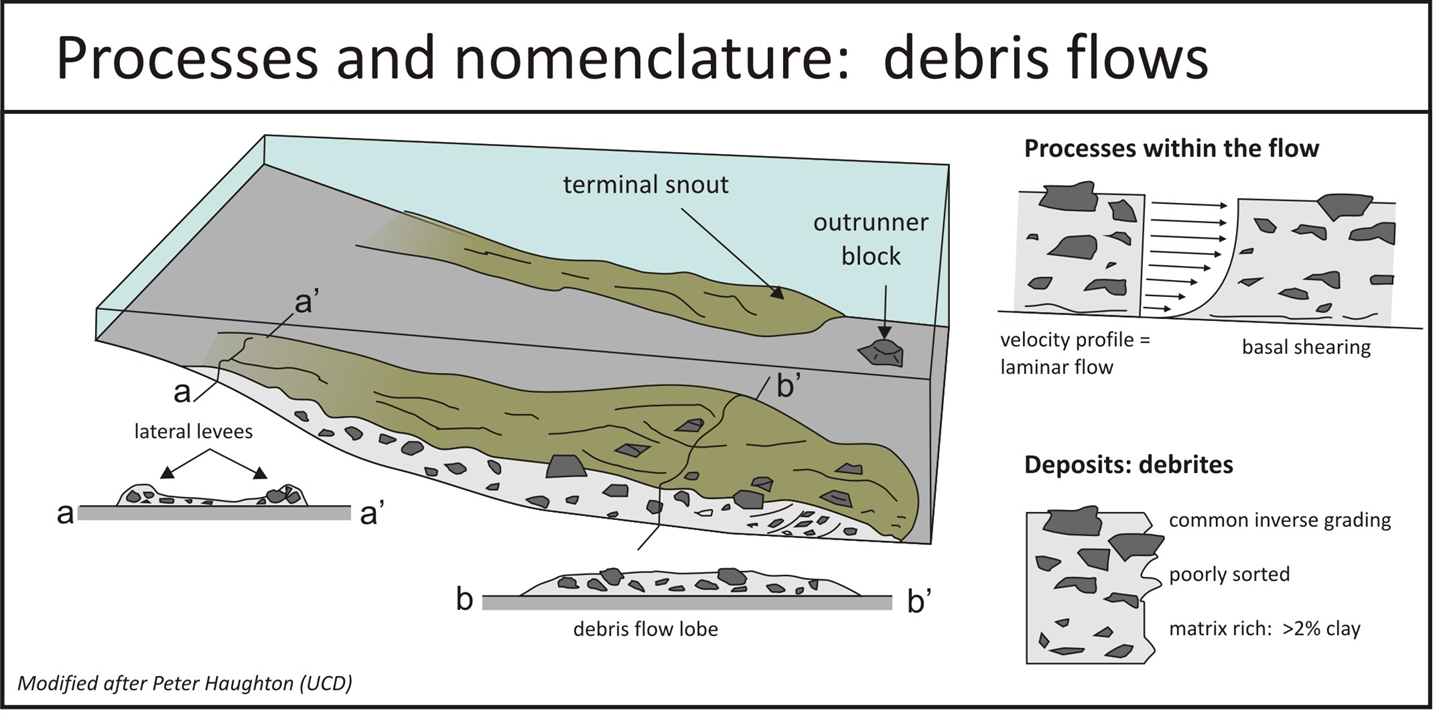
What do debris flow deposits look like?
Chaotic mixtures of different grain types and sizes
Poorly sorted or…?
Inverse grading may occur
Clasts are disorganized
Occur frequently within canyons or channels in deep-water settings
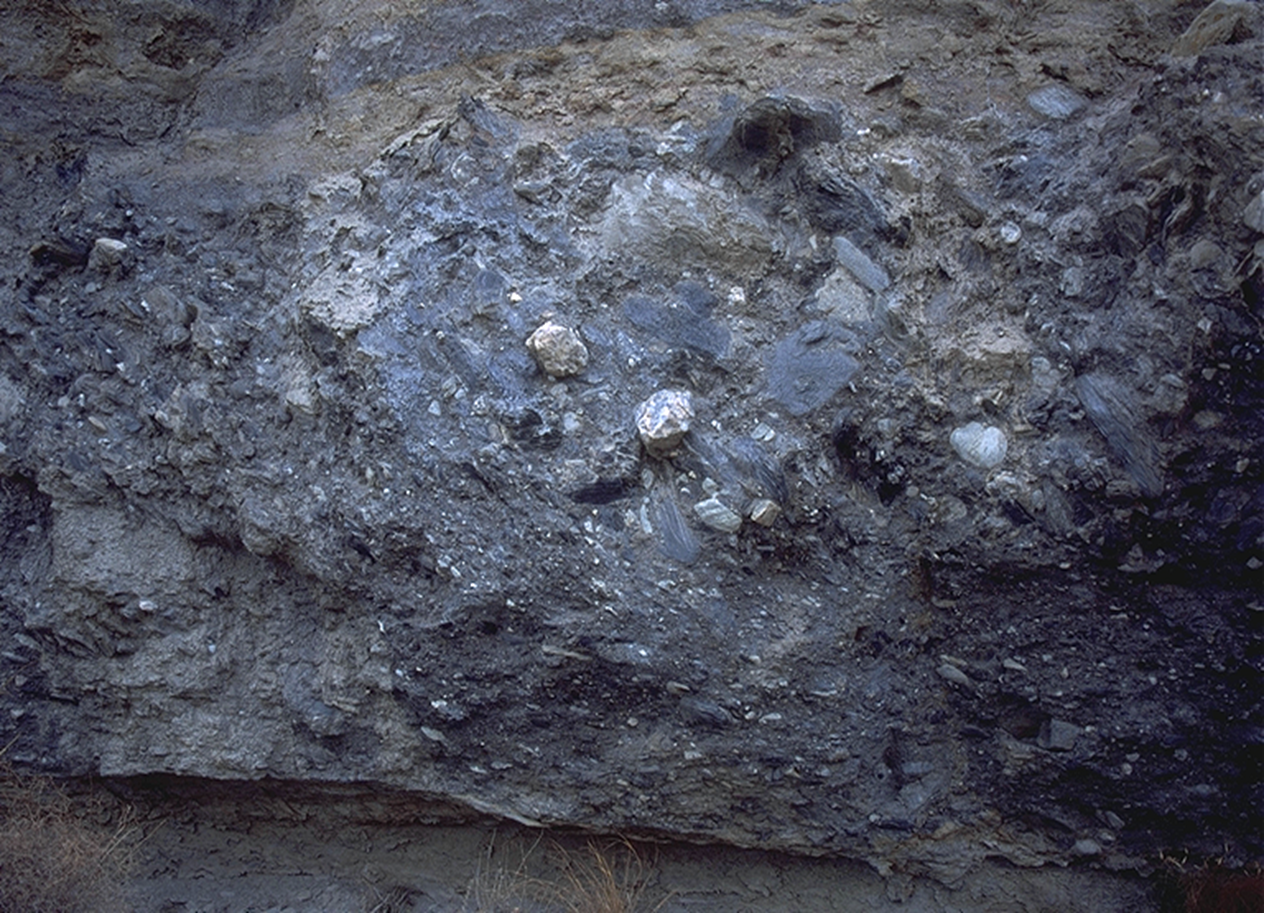
What are slides and slumps?
Dominated by intact, but rotated bedding (contrasts debris flows)
Occur mainly on slopes, but also front- and backsides of levees as a result of oversteepening or flow undercutting
May be difficult to recognize in core
Distance travelled may be difficult to ascertain
In subsurface and seafloor often termed ‘mass transport deposits’ or MTDs. Infers a range of processes.
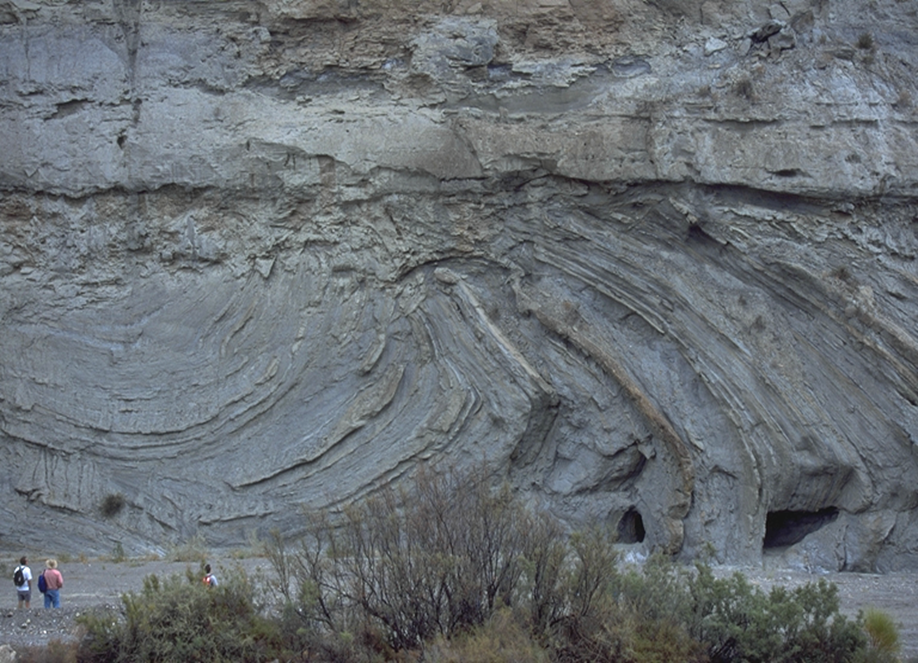
What do turbidites, hybrid event beds and debrites look like in core?
Turbidites:
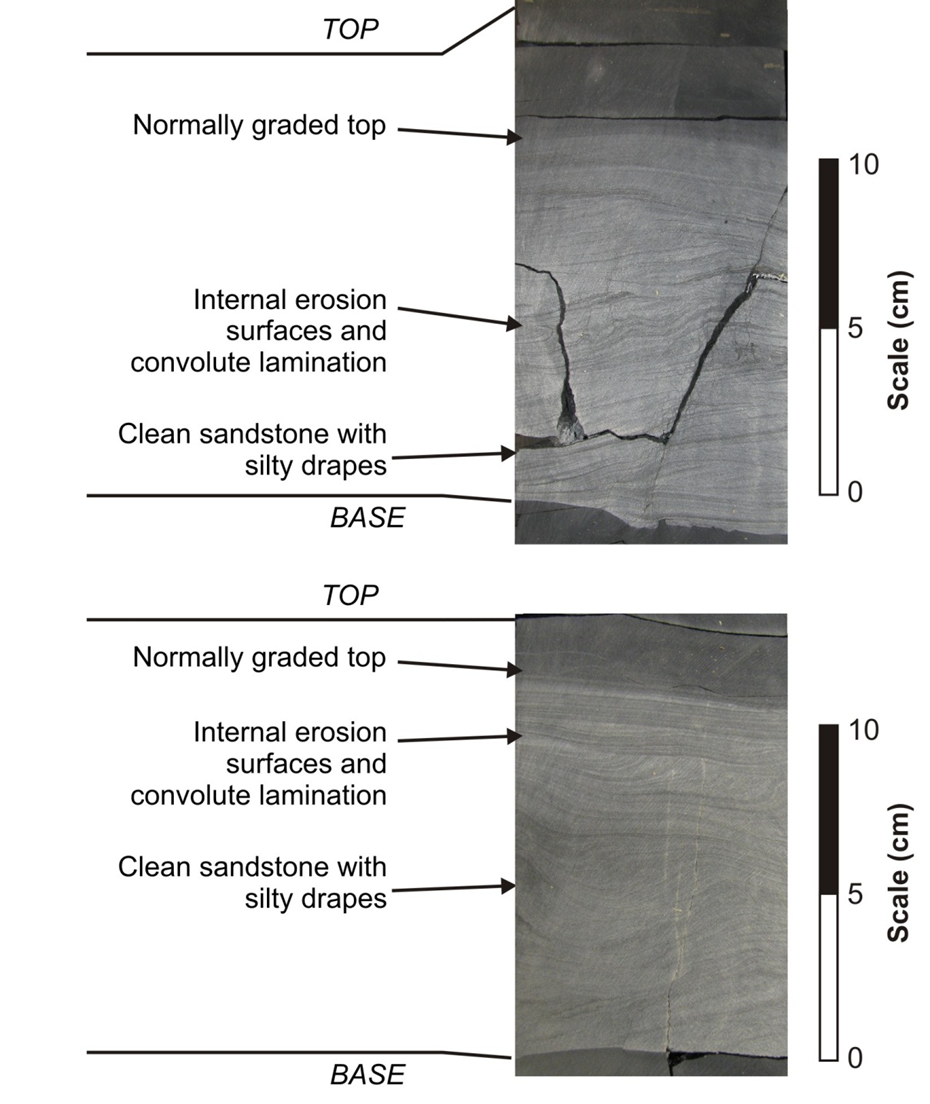
Hybrid Event Beds:

Debrites:
